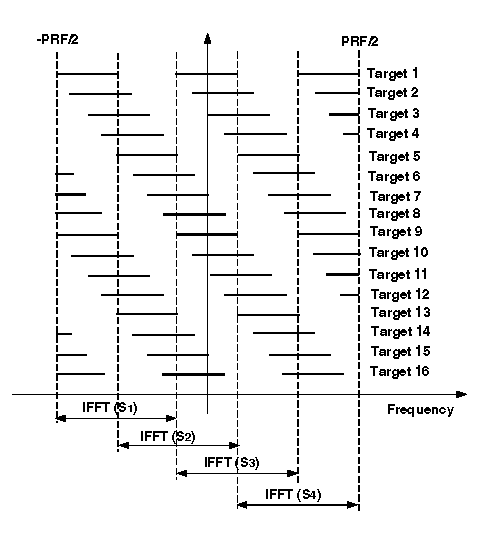
Figure 1: Burst and Target Arrangements
This subsection examines the target spectrum for burst-mode data, and explains why the basic RD algorithm is not optimal in this case. Understanding the spectrum characteristics leads to the proposed algorithm.
In this discussion, the burst arrangement of the ENVISAT AP mode is used as an example. Let Tb be the burst duration as well as the burst separation, and let the beamwidth be 5Tb. Consider 16 equally-spaced targets that lie in the same range gate after RCMC, denoted by T1 to T16 in Figure 1. The frequency excursions of these targets are shown in Figure 2. It is assumed that the PRF equals the full target bandwidth. Because of the data gaps, the spectrum of each target is segmented.

Figure 1: Burst and Target Arrangements

Figure 2: Target Spectrum
To use the standard single-look RD algorithm, the data gaps must be zero padded. However, the following problems are encountered:
With modifications to the basic RD algorithm, these problems can be solved.